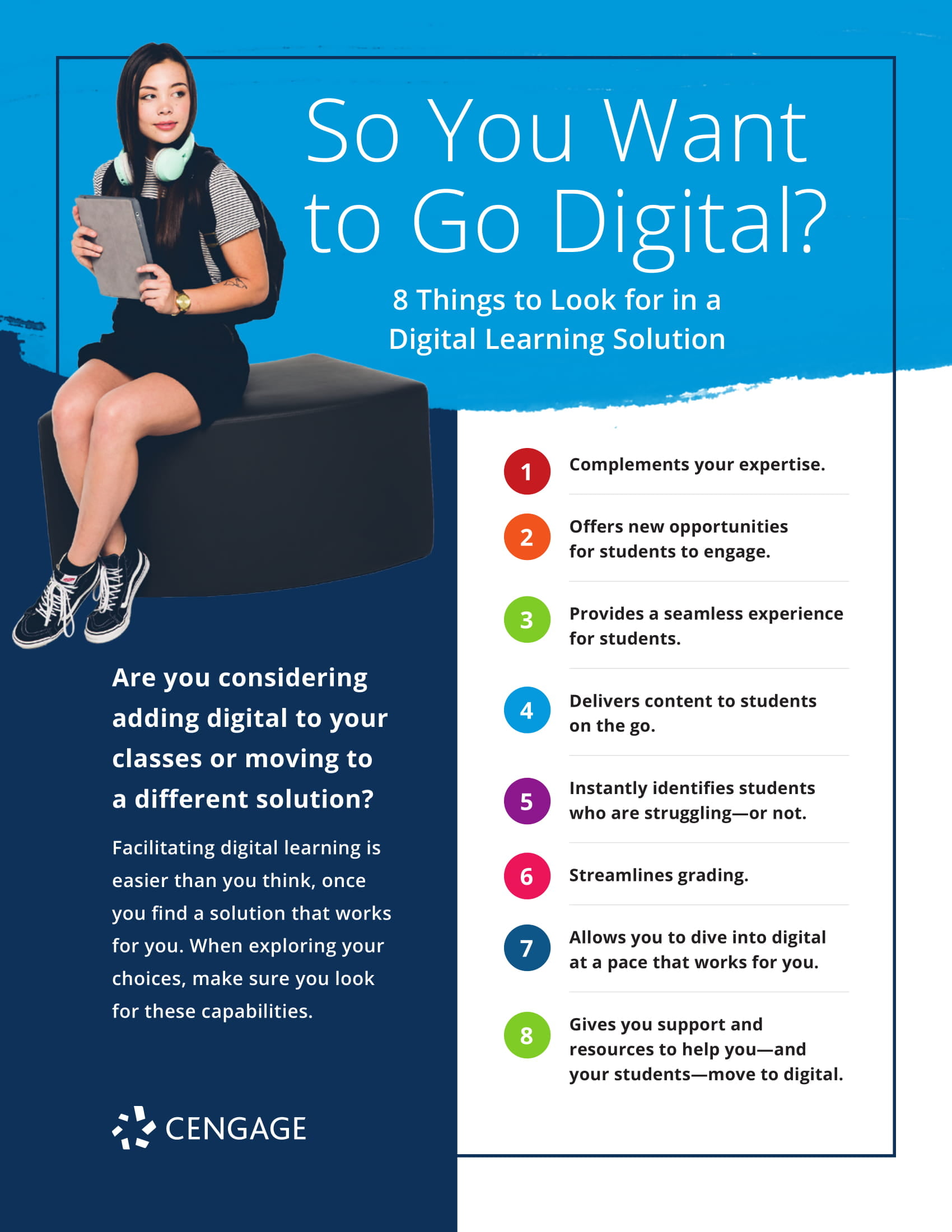Article Summary
- Digital learning can improve experiences and outcomes by increasing engagement, communication and confidence.|Addressing different learning styles, increasing communication, keeping things on track and providing a base of knowledge are some of the benefits seen.
Katie Montgomery is the Executive Manager of Marketing Content at Cengage. She’s got a passion for animal rescue and loves providing content to help make teaching life a little easier for faculty.
Today, your students live their lives digitally, on their smartphones, tablets and laptops, from streaming videos to paying bills online. Digital learning meets students where they are.
But beyond being something students understand — and are ready for — digital learning can improve experiences and outcomes by increasing engagement, communication and confidence. Here are 4 ways digital learning can boost student outcomes:
Addresses multiple learning styles.
Multiple content forms (including multimedia and interactive tools) enabled by digital means that students can interact with the materials in ways that engage them best. Tactile learners can use course flashcards or highlight passages; visual and auditory learners can engage with videos and podcasts.
Increases communication.
Digital lets students participate in digital group assignments and work with instructors without having to find times that meet everyone’s schedules. This is particularly important when thinking about non-traditional students who need more flexible schedules.
Keeps things on track.
Digital puts everything in one place and makes it simple for students to quickly see activities, due dates and grades. Coupled with regular notifications and reminders of due dates, students can stay on top of their coursework easily.
Provides a base level of knowledge
In addition to reminders and tracking, digital empowers students to be better prepared for the content in a course. Supplemental materials, like flashcards, interactive maps and quizzes for studying, help learners have a base level of knowledge and more confidence when they arrive in class.
Interested in learning more about how digital learning can help your students and also support your instruction? Check out our eBook A New Way to Look at Learning: The Power of Digital in Higher Education.



